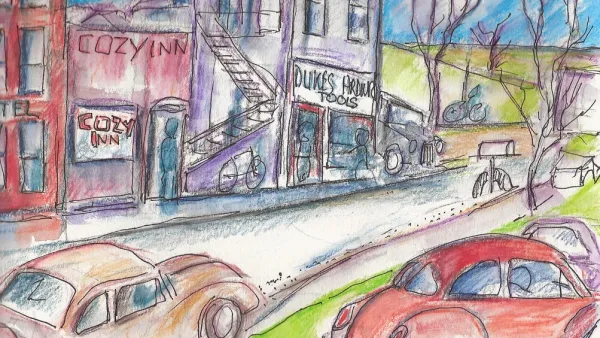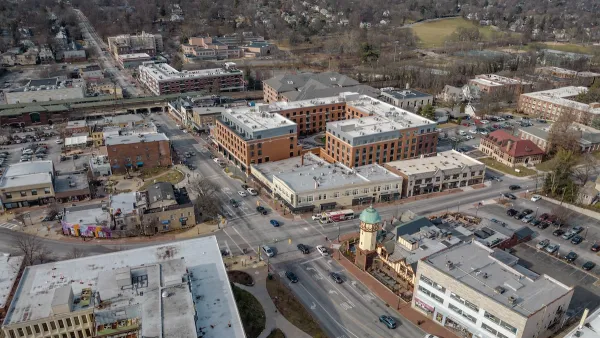Benjamin Wellington reviews a new book by Mark C. Childs, which paints a picture of the city as the product of a complex and highly detailed design hierarchy, from regional topography all the way down to the arrangement of indoor spaces.
Architecture professor Mark C. Childs sees the city through the lens of the gestalt. For him, no design feature, however large or small, exists in isolation: "settlements are not just the sums of their parts; their poetry and
vitality comes from their collective composition – the interactions
among multiple designs."
So goes the thesis of his new book, Urban Composition: Developing Community through Design, which explores the interplay of elements at all levels of design. These elements produce not only the physical phenomenon of the city, but an ongoing dialogue of design and creation: "Great places emerge from the concinnity [i.e. harmony] of incremental acts of design.
Existing work frames new projects, which in turn inspire future works."
What does all this mean for design professionals? It comes down to context and hierarchy. "A building is more likely to change than the lot boundaries, which are
less permanent than the underlying topography. Additionally, a building
creates new spaces for interior design, from the division of rooms to
the arrangement of furniture. These layers of design define how
different design professions interact with each other. The interactions
between multiple designers operating at different scales leads to a rich
urban composition."
In this narrative, even public art plays a role in the patchwork of the city, subtly influencing the perception and value of landscape architecture. As Wellington concludes, "in the same way that a road layout influences how buildings are shaped, landscape infrastructure frames and guides our built forms."
FULL STORY: Cities Are More Than Just Buildings and Parks

Analysis: Cybertruck Fatality Rate Far Exceeds That of Ford Pinto
The Tesla Cybertruck was recalled seven times last year.

National Parks Layoffs Will Cause Communities to Lose Billions
Thousands of essential park workers were laid off this week, just before the busy spring break season.

Retro-silient?: America’s First “Eco-burb,” The Woodlands Turns 50
A master-planned community north of Houston offers lessons on green infrastructure and resilient design, but falls short of its founder’s lofty affordability and walkability goals.

Test News Post 1
This is a summary

Analysis: Cybertruck Fatality Rate Far Exceeds That of Ford Pinto
The Tesla Cybertruck was recalled seven times last year.

Test News Headline 46
Test for the image on the front page.
Urban Design for Planners 1: Software Tools
This six-course series explores essential urban design concepts using open source software and equips planners with the tools they need to participate fully in the urban design process.
Planning for Universal Design
Learn the tools for implementing Universal Design in planning regulations.
EMC Planning Group, Inc.
Planetizen
Planetizen
Mpact (formerly Rail~Volution)
Great Falls Development Authority, Inc.
HUDs Office of Policy Development and Research
NYU Wagner Graduate School of Public Service




























